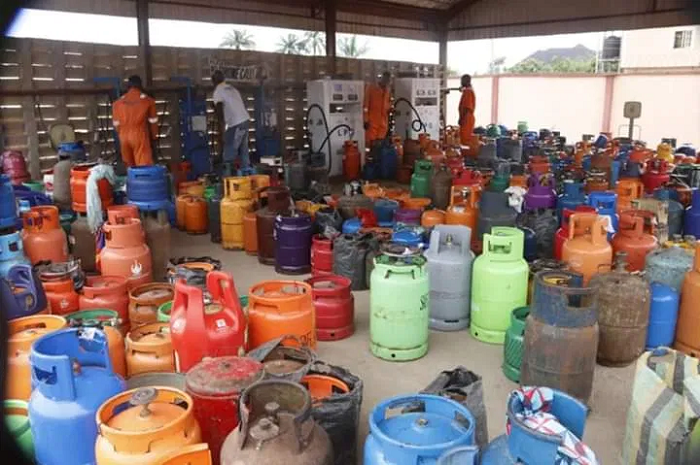The high cost of Liquified Petroleum Gas (LPG) commonly called cooking gas is worsening the cost of living for low-income households and could derail gains in eliminating dirty fuels for cooking.
The average retail price for 12.5kg of cooking gas has risen above N10,000 in major cities across Nigeria on the back of supply shortages stemming from Russia’s war with Ukraine and the inability to raise capacity at home, according to analysts.
“Our local manufacturing capacity for both cooking gas and kerosene is very limited,” said Chinedu Onyegbula, an energy sector expert and director, Bullox Resources Limited, said.
“These products from the oil and gas refining process are not being subsidised, hence, dollar fluctuations, the Russia/Ukraine war, Nigeria’s inability to exploit its huge gas reserve and the fact that distribution and transportation cost locally is not cheap are affecting the price.”
Nigerians dealing with the high cost of food and other basic necessities now have to grapple with the rising cost of cooking gas as the government seems helpless.
Cooking gas prices have steadily been on the rise in the past few months. Data from the Nigerian Bureau of Statistics (NBS) show that the average price for refilling a 12.5kg cylinder of cooking gas increased to N8726.30 in May 2022 from N8164.37 in April 2022 representing a 6.88 percent month-on-month increase.
Similarly, on a year-on-year basis, the average retail price for refilling a 12.5kg cooking gas increased by 103.46 percent from N4288.95 in May 2021.
The state comparisons showed that the highest average retail price for the refilling of a 12.5kg cylinder of cooking gas was recorded in Abuja with N9308.00, followed by Ekiti with N9209.09 and Oyo, with N9184.06.
Nigeria needs to smoothen the local distribution process across the country as prices tend to vary as you move further away from the port and distribution point, said Onyegbula.
“We need competent players to bring competition, reduce prices and provide customised consumer financing to make it easier for consumers to purchase,” he said.
Kerosene, once a cheaper alternative is also on the rise. According to the NBS data, the average retail price per gallon of household kerosene paid by consumers increased by 10.38 percent on a month-on-month basis from N2, 136.52 in April 2022 to N2, 358.30 in May 2022. On a year-on-year basis, it increases by 86.13 percent from N1, 266.99 in May 2021
Kerosene is among fuels the Federal Government is seeking to replace with cooking gas as well as firewood but higher LPG prices are forcing many to turn to charcoal and wood.


Comment here